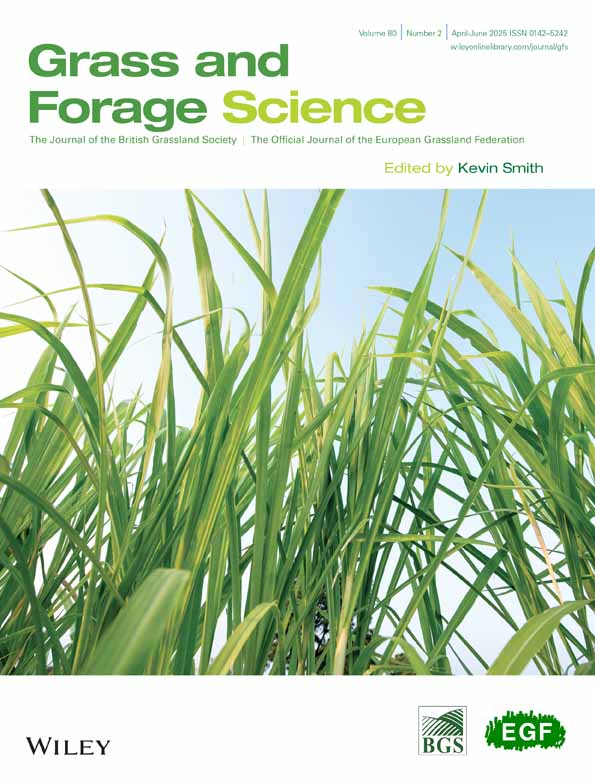Ver ítem
- xmlui.general.dspace_homeCentros Regionales y EEAsCentro Regional Buenos Aires SurEEA BordenaveArtículos científicosxmlui.ArtifactBrowser.ItemViewer.trail
- Inicio
- Centros Regionales y EEAs
- Centro Regional Buenos Aires Sur
- EEA Bordenave
- Artículos científicos
- Ver ítem
In Vivo Reductions in Methane and Urinary Nitrogen by Perennial Non-Bloating Temperate Legume and Forb Functional Forages Produced in the Mountain West United States
Resumen
Ruminant livestock production is the greatest source of agricultural greenhouse gas (GHG) production, largely due to enteric methane (CH4) emissions. While the optimised feed rations used in confinement dairy and beef finishing operations can reduce CH4 emissions of individual animals compared with cattle on forage diets, the profitability of beef cowherds and grazing-based dairies rests on controlling the input costs, most notably feed. Grazing is the
[ver mas...]
Ruminant livestock production is the greatest source of agricultural greenhouse gas (GHG) production, largely due to enteric methane (CH4) emissions. While the optimised feed rations used in confinement dairy and beef finishing operations can reduce CH4 emissions of individual animals compared with cattle on forage diets, the profitability of beef cowherds and grazing-based dairies rests on controlling the input costs, most notably feed. Grazing is the least costly feed source, and we have studied the management of non-bloating, nutrient-dense perennial forages with the goal of maximising benefits to ruminants, the environment, producers, and consumers. The naturally alkaline soils, dry climate, long sunny days, and cool nights of the Mountain West United States are favourable for the productivity and persistence of perennial legumes. While alfalfa (Medicago sativa L.) is the highest-value cash crop in the western United States, it is not routinely used for grazing due to the likelihood of bloat. Relative to cattle grazing cool-season grass pastures, cattle grazing sainfoin (Onobrychis viciifolia Scop.), birdsfoot trefoil (Lotus corniculatus L.), and cicer milkvetch (Astragalus cicer L.) had greater intake, production, and lower urinary nitrogen. As a function of intake, the enteric CH4 emissions of cows, heifers, and calves grazing these legume pastures were reduced 25%–63% compared with the same cattle on grass pastures, and heifers grazing legume pastures had CH4 emissions no different from heifers on total mixed rations. We integrate these observations of temperate perennial forage legumes and forbs with the wider literature to identify promising traits and species.
[Cerrar]

Autor
MacAdam, Jennifer W.;
Villalba, Juan J.;
Lagrange, Sebastian Pablo;
Stewart, Elizabeth K.;
Pitcher, Lance R.;
Slebodnik, Kathryn A.;
Norton, Jeanette M.;
Reeve, Jennifer R.;
Yunhua, Zhang;
Bolletta, Andrea Ivana;
Legako, Jerrad F.;
Christensen, Rachael G.;
Hunt, Sara R.;
Fuente
Grass and Forage Science 80 (2) : e12719. (June 2025)
Fecha
2025-06
Editorial
Wiley
ISSN
0142-5242
1365-2494
1365-2494
Formato
pdf
Tipo de documento
artículo
Palabras Claves
Derechos de acceso
Abierto
 Excepto donde se diga explicitamente, este item se publica bajo la siguiente descripción: Creative Commons Attribution-NonCommercial-ShareAlike 2.5 Unported (CC BY-NC-SA 2.5)
Excepto donde se diga explicitamente, este item se publica bajo la siguiente descripción: Creative Commons Attribution-NonCommercial-ShareAlike 2.5 Unported (CC BY-NC-SA 2.5)


